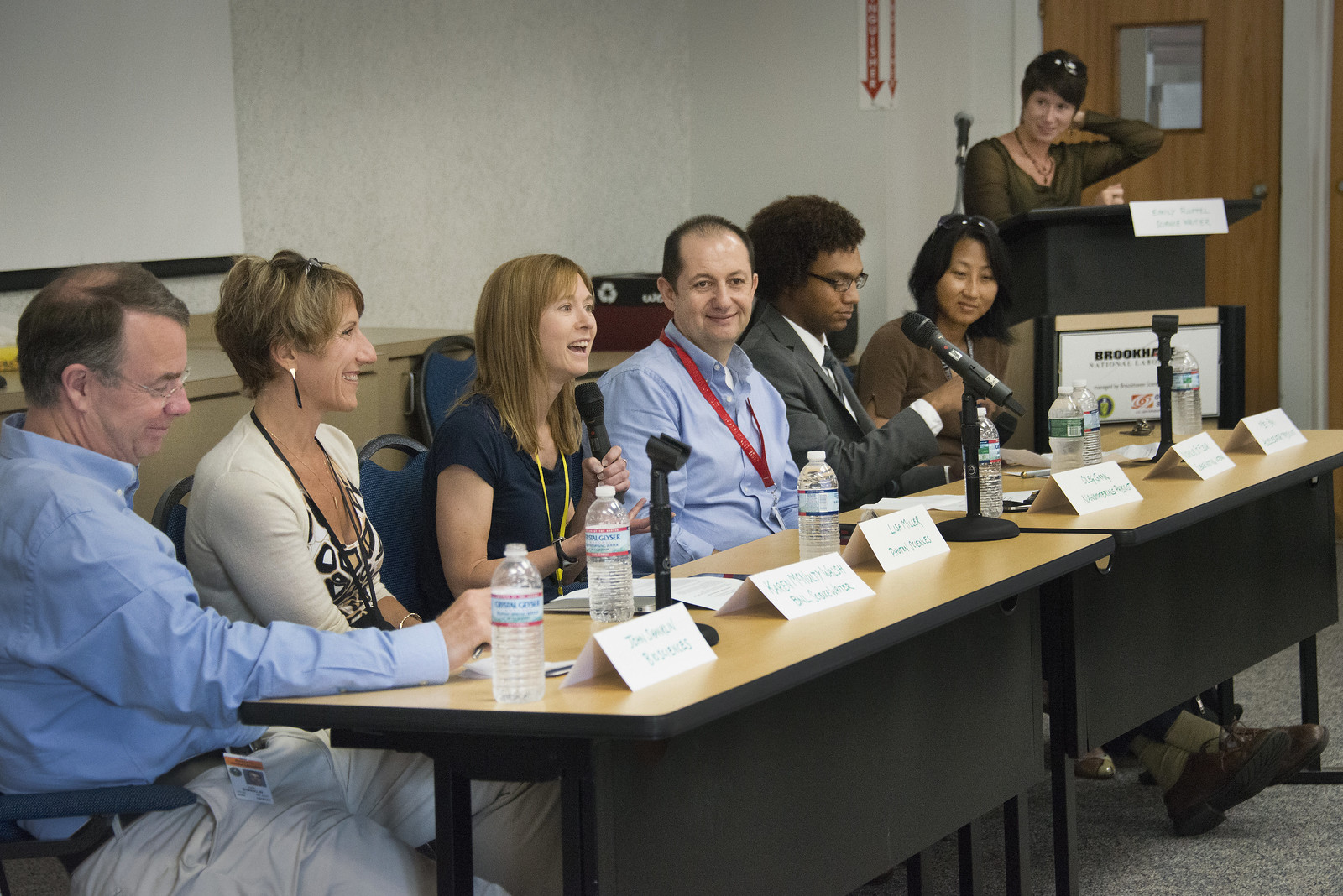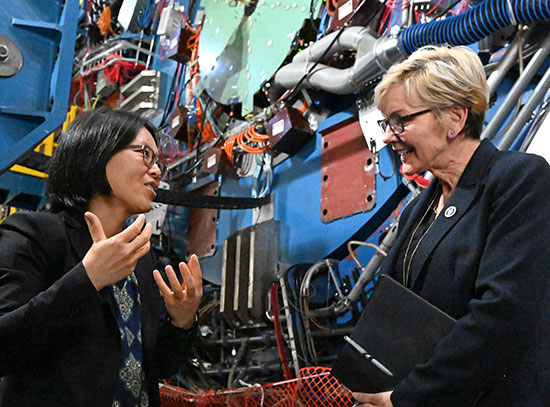Summer Students Get Tips on Telling the Stories Behind their Science
July 24, 2013
If you think the search for new forms of matter or more functional superconductors is tough, try explaining that research to someone outside your field—or someone completely unfamiliar with science! That’s a challenge about 75 of this summer’s student research interns may be better equipped to handle after participating in a program on science communication run by Brookhaven Lab’s Media & Communications Office with assistance from the Office of Educational Programs. The goal was to help these young scientists gain skills and confidence to help them communicate clearly about their research and share their passion for science with friends, neighbors, reporters, and future funders.
The two-part program kicked off with a panel discussion featuring Brookhaven researchers John Shanklin (Biosciences), Lisa Miller (Photon Sciences), Oleg Gang (Center for Functional Nanomaterials) and Mei Bai (Collider-Accelerator Department), and science writers Karen McNulty Walsh and Nicholas St. Fleur (himself an intern), moderated by Emily Ruppel, a former Brookhaven science-writing intern now teaching science communications at Bellarmine University, on Thursday, July 11. Panelists shared their perspectives on the importance of science communication—for inspiring young people, building support for science funding, reporting on investments made by taxpayers, among other reasons—along with communication challenges, success and “horror” stories, tips for connecting with different audiences, and the value of using imagery and analogies.
Aside from students wishing they’d had more time to ask questions and interact with the panel, students and scientists alike thought the program was worthwhile. “It was fun and I would do it again,” Shanklin said.
“It would be great to extend this to include young post-docs and junior scientific staff,” suggested Bai.
"I would certainly recommend the workshop to anybody who wishes to be able to explain their research to a non-scientific audience."
— summer student Rachel Sandler
The following day, Ruppel, McNulty Walsh, St. Fleur, and Brookhaven science writers Justin Eure and Chelsea Whyte, led two groups of about 25 students in intensive hands-on workshops. The writers gave a tag-team presentation on the “whys” and “hows” of science communication, including key questions to answer (What’s new? Why does it matter?), and tips for grabbing audience interest and unpacking/translating complex ideas. Then students tried putting these ideas into practice by describing and/or writing about their research in a low-risk setting with feedback from the group and the science writers.
“The personalized session … really helped me to understand exactly how to apply what I was learning in this workshop to the research that I am doing,” said Daniel Raynor, a student from Yale University working with Peter Takacs in the Instrumentation Division on sensors for the Large Synoptic Survey Telescope, an instrument that will search the southern skies for clues about dark matter and dark energy.
“I would certainly recommend the workshop to anybody who wishes to be able to explain their research to a non-scientific audience,” said Rachel Sandler, a student from the University of Arizona researching ways to improve the effectiveness of radiation beams for treating cancer, under the guidance of Nicholaos Tsoupas and Omar Gould in the Collider-Accelerator Department.
The Media & Communications team will incorporate feedback and potentially expand the program for next year.
2013-4147 | INT/EXT | Newsroom










